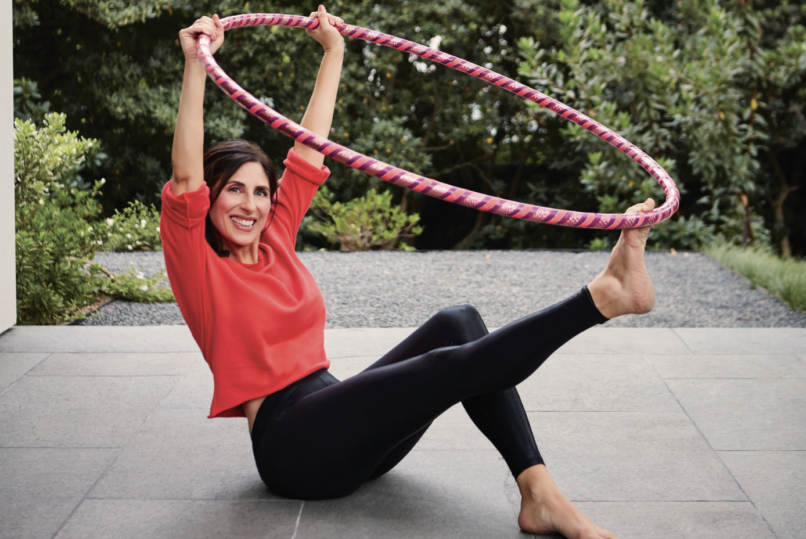
Christine’s Fave Calming Techniques
by | | Meditation
When the shite hits the fan, your blood rushes to your head and you need to find your footing, calming is key. Otherwise, you risk going off the rails and into the depths of Negativeville, where nothing good ever happens and nobody comes out alive. Here are some strategies to keep you centered and on track for your preferred destination: Itsall- good City.
Calming Tool #1: Grounding
Perfect for when a wave of major anxiety is washing over you (if only I’d had this tech- nique on that horrible Bronx River Parkway bus ride). Grounding helps you feel safe in your own head and body when the world around seems crazy.
1) Think of a peaceful place. Use five adjectives, from your five senses, to describe it. I feel the warmth of the sun, smell the breeze, taste the salty air, hear the squawk of gulls, see a sparkling wave. (Can you guess where I went in my head?)
2) Picture your most nurturing figures. I envision Mother Teresa, my friend Louise, and my mindfulness teacher, Diana Winston.
3) Picture your protective figures. I think of my dad, my husband, and my grandmother.4) Picture three wise figures and remember why you love their philosophies. I think of
Don Miguel Ruiz, Joel Osteen, and my therapist.
All these images will ground you in your values and remind you of the ways in which you want to live your life. What would these people say, do, advise? How would your favor- ite place nurture, heal, or revitalize you? Use that space and wisdom to create a better response to your stress.
Calming Tool #2: Rebalancing
When you need to get out of your head STAT, use this technique to counteract those racing thoughts. Ready? Here it is: name six things. That’s it. Could be six colors, six breeds of dogs, six songs from Bon Jovi’s Slippery When Wet, six characters in Dirty Dancing. Or if you’re going for major distraction, go for the whole cast of Grease or all of Kevin Bacon’s films! It’s similar to what you do when your four-year-old is having a hissy fit in the cereal aisle. Divert, pivot, distract—it works!
You’ll be rebalanced in a heartbeat.
Calming Tool #3: Acceptance and Equanimity
They’re a mouthful, but these concepts saved my life and my sanity. Because I’m an impatient Leader personality prone to Bigger, Better, Faster, and I’ll-Be-Happy-When- Syndrome, I needed to learn the concept of it is what it is. Buddhists believe that desire is the source of all unhappiness, and it’s hard to argue that. But given that we’re all human
(even if Buddhist), I’d say it’s more realistic to simply stop wanting something to be different from what it is.
Acceptance and equanimity (which is the understanding that things simply are as they are) teach you to get your ego out of the way, because it’s not all about you. You are not in control of everything. Moreover, if your boss just fired you, jelly Munchkins are not going to undo that. You gain peace when you learn to work with reality as it is, rather than fight it or feed your face because of it.
For me, accepting what is feels extremely freeing. (“If you want less stress, make isnessyour business,” says life coach Marie Forleo. Amen!) Once when I was freaking out over a major dental procedure, my teacher (Elisha Goldstein, author of Uncovering Happiness)told me, “Your feelings are already here.” All I had to do was put out the welcome mat!
For practicing Acceptance and Equanimity, here’s a short and sweet exercise from mind- fulness teacher Jack Kornfield:
Sit in a comfortable posture with eyes closed. Bring soft attention to your breath until body and mind are calm. Reflect on the benefit of a mind that has balance and equanimity. Sense what a gift it can be to bring a peaceful heart to the world around you. Let yourself feel an inner sense of balance and ease. Then begin repeating such phrases as, “May I be balanced and at peace.” Ac- knowledge that all created things arise and pass away: joys, sorrows, pleas- ant events, people, buildings, animals, nations, even whole civilizations. Let yourself rest in the midst of them. “No matter how I might wish things to be otherwise, things are as they are.” “May I learn to see the arising and passing of all nature with equanimity and balance. May I be open and peaceful.” “May I one day accept myself just as I am.”
For more on this practice, see Byron Katie’s book Loving What Is: Four Questions That Can Change Your Life.
Calming Tool #4: Gratitude
This one may give you pause. Because, really, when life throws you a crap boss or car theft, what is there to be grateful for?
To which I say, listen to Robert Emmons, author of The Little Book of Gratitude: “It’s easy to feel grateful when life is good. But when disaster strikes, gratitude is worth the effort.” Why? Because when we are grateful, Emmons says, we get to view life in its entirety and not
This is an excerpt from The Right Fit Formula







